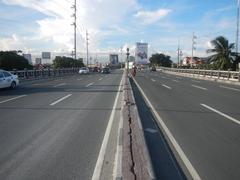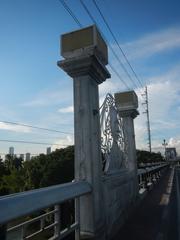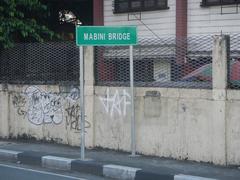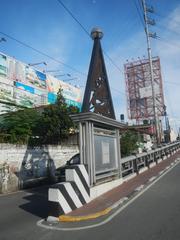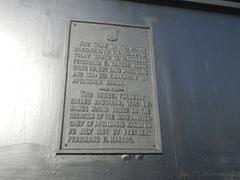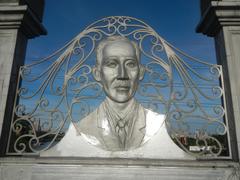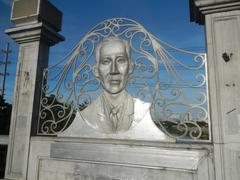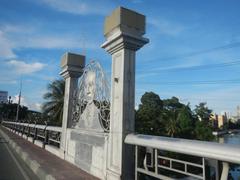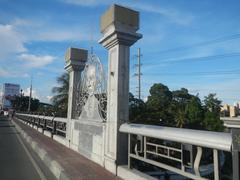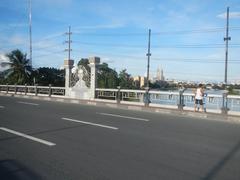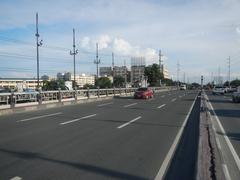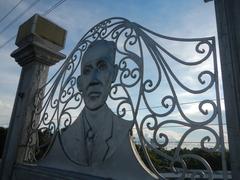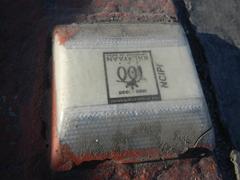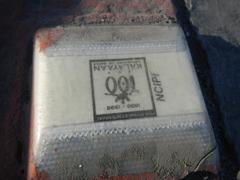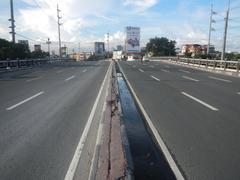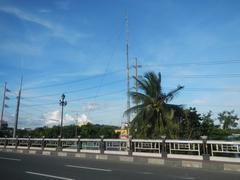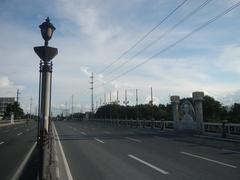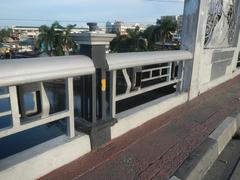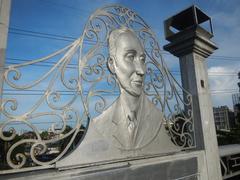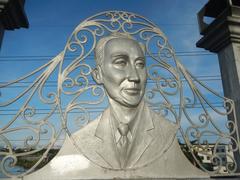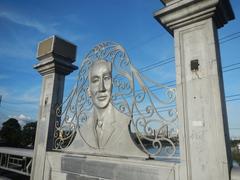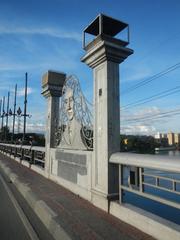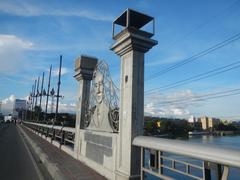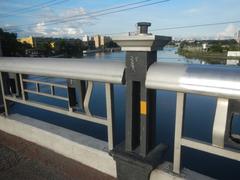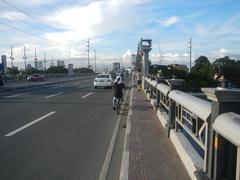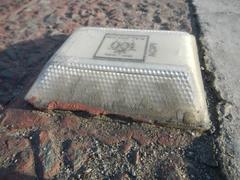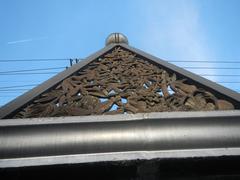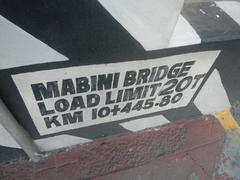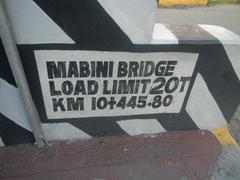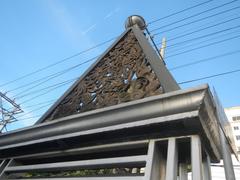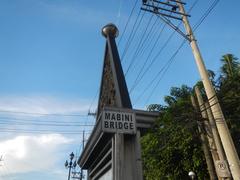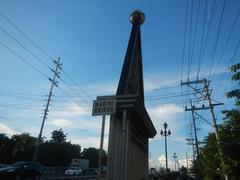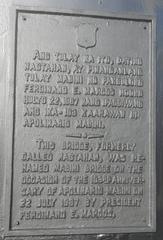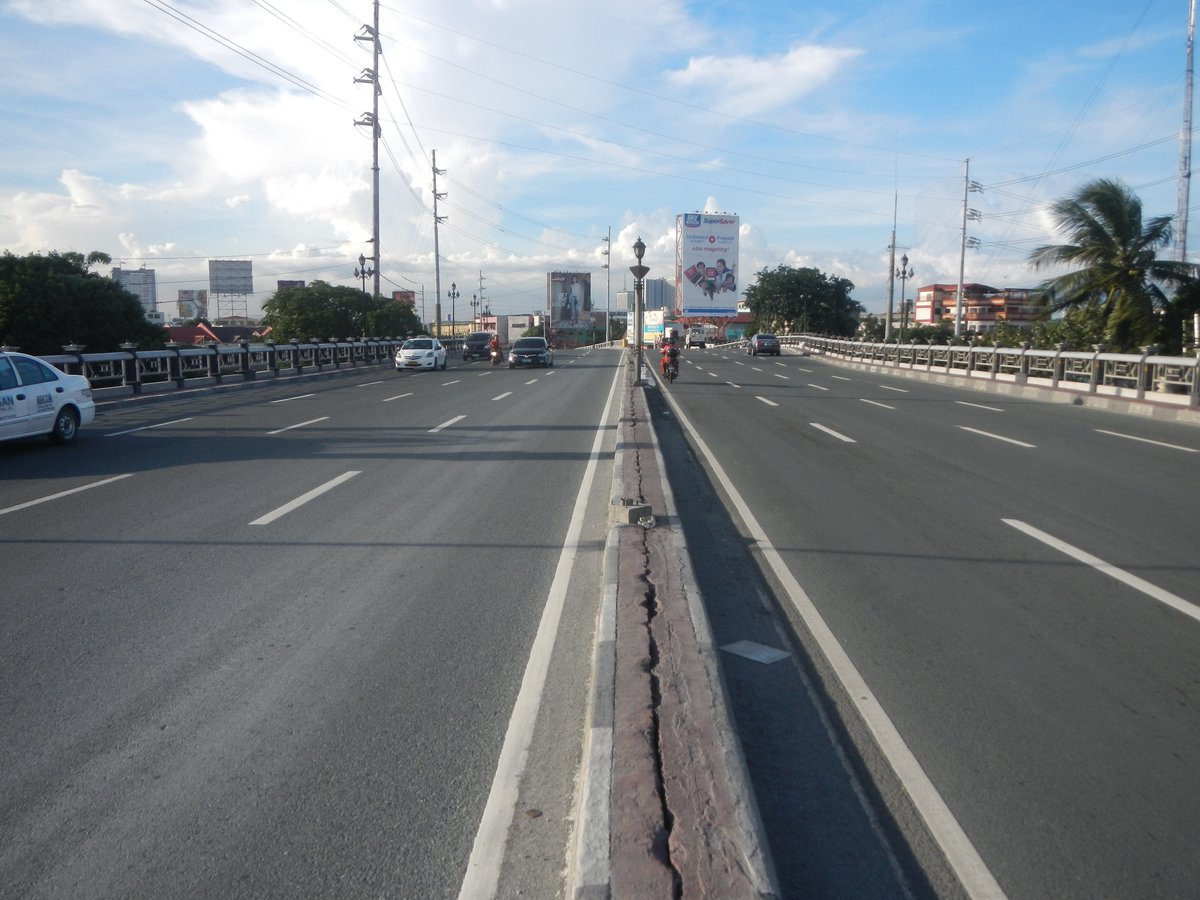
Mabini Bridge Visiting Hours, Tickets, and Metro Manila Historical Sites Guide
Date: 15/06/2025
Introduction
Mabini Bridge is a vital and historic crossing over the Pasig River in Metro Manila, Philippines. Formerly known as Nagtahan Bridge, this landmark links the districts of Santa Mesa, Paco, and Pandacan, serving both as a crucial piece of urban infrastructure and a symbol of the city’s rich cultural heritage. Renamed in honor of Apolinario Mabini, the “Brains of the Revolution,” the bridge stands as a testament to the country’s revolutionary past and ongoing urban evolution. Nearby, the Mabini Shrine further enriches the experience, offering visitors insights into Mabini’s life and the Filipino struggle for independence.
This detailed guide provides essential information on Mabini Bridge visiting hours, access, nearby attractions, historical context, practical travel tips, and the cultural importance of this iconic site. Whether you’re a history enthusiast, local resident, or tourist, this resource will help you explore one of Manila’s most significant landmarks with confidence and appreciation.
Table of Contents
- Introduction
- History of Mabini Bridge and Mabini Shrine
- Structural Design and Features
- Visitor Information: Hours, Access, and Tickets
- How to Get There and Accessibility
- Nearby Attractions and Things to Do
- Cultural and Historical Significance
- Preservation Efforts and Modern Upgrades
- Practical Travel Tips
- Frequently Asked Questions (FAQ)
- Visual Resources
- Conclusion and Recommendations
- References
History of Mabini Bridge and the Mabini Shrine
Origins and Construction
The original Nagtahan Bridge was built in the 1930s to improve connectivity between Manila’s northern and southern districts, easing congestion and supporting the city’s rapid urbanization. During World War II, a temporary pontoon bridge was installed by the U.S. Army to facilitate military movements (Wikipedia). The permanent concrete bridge was completed in 1963 and later renamed Mabini Bridge on July 22, 1967, through Proclamation No. 234 by President Ferdinand Marcos, in honor of Apolinario Mabini (Rappler).
Apolinario Mabini and the Shrine
Apolinario Mabini (1864–1903), known as the “Sublime Paralytic,” was a paralyzed lawyer, philosopher, and statesman who played a crucial role in the Philippine Revolution and the country’s early governance. His home, originally located near the bridge’s site, was relocated to preserve it during urban development. Today, the Mabini Shrine sits on the Polytechnic University of the Philippines (PUP) campus and serves as a museum dedicated to his legacy (mabinishrine.gov.ph).
Structural Design and Features
Mabini Bridge features a reinforced concrete structure approximately 200 meters long, with four lanes for vehicles and pedestrian walkways on both sides. Its robust engineering ensures resilience against Manila’s heavy traffic and frequent flooding. Subtle Art Deco-inspired details, commemorative plaques, and modern LED lighting enhance both the bridge’s functionality and its visual appeal, especially at night. Safety is prioritized with concrete barriers separating vehicular and pedestrian lanes, while ramps and slopes improve accessibility.
Visitor Information: Hours, Access, and Tickets
- Mabini Bridge Visiting Hours: Open 24 hours a day; accessible to both vehicles and pedestrians at all times.
- Tickets and Fees: There are no entrance fees or ticket requirements for crossing Mabini Bridge.
- Mabini Shrine Museum Hours: Open Tuesday to Sunday, 9:00 AM to 5:00 PM; admission is free.
- Accessibility: The bridge and shrine are generally accessible, with ramps and assistance available at the shrine. However, some sidewalks may be uneven (malacanang.gov.ph).
How to Get There and Accessibility
Public Transport Options
- Jeepneys and Buses: Numerous routes pass near or across Mabini Bridge, connecting districts like Quiapo, Ermita, and Sampaloc.
- Rail: The LRT-2 (PUP and Legarda Stations) and PNR Santa Mesa Station are both within walking distance.
- Taxis/Ride-Hailing: Services like Grab are widely available for convenience.
- Tricycles/Pedicabs: Useful for short distances and last-mile connectivity.
Parking
Street parking is limited around the bridge. Public transport or walking from nearby destinations is recommended.
Accessibility
While the bridge has ramps and tactile paving, wheelchair and stroller access can be hindered by uneven sidewalks or obstructions. Assistance is advisable for those with mobility concerns.
Nearby Attractions and Things to Do
- Mabini Shrine Museum: Explore exhibits on Mabini’s role in Philippine history (mabinishrine.gov.ph).
- Polytechnic University of the Philippines (PUP): Offers additional cultural and educational points of interest.
- Paco Park and Cemetery: A tranquil historical park and former cemetery.
- San Sebastian Church: Renowned for its all-steel Gothic architecture.
- Pasig Riverwalk: Ideal for scenic strolls and photography.
All these sites are within a short distance, making Mabini Bridge an excellent starting point for cultural exploration (Guide to the Philippines).
Cultural and Historical Significance
Mabini Bridge is more than infrastructure—it is a living monument to the Philippines’ revolutionary past and enduring spirit. The bridge and nearby shrine honor Mabini’s contributions to the nation, while serving as daily reminders of patriotism, resilience, and intellectual legacy. The bridge’s commemorative plaques and educational tours further enrich the visitor experience (Wikipedia).
Preservation Efforts and Modern Upgrades
Ongoing maintenance by the Department of Public Works and Highways ensures that Mabini Bridge remains structurally sound and visually appealing. Recent upgrades include seismic retrofitting for earthquake resilience, surface improvements, modern lighting, and CCTV surveillance for enhanced safety. Relocation and restoration of the Mabini Shrine reflect Manila’s commitment to balancing heritage conservation with urban growth (malacanang.gov.ph).
Practical Travel Tips
- Best Time to Visit: Early morning or late afternoon for cooler temperatures and beautiful lighting.
- What to Bring: Comfortable walking shoes, sun protection, water, and a camera.
- Safety: The area is generally safe, especially during the day. Remain vigilant, especially after dark, and keep valuables secure (We Hate The Cold; Manila FYI).
- Guided Tours: Book through local operators or the Mabini Shrine for deeper historical context.
- Events: Access may be restricted during major events like the Traslacion procession; check for traffic advisories (Inquirer.net; GMA News).
Frequently Asked Questions (FAQ)
Q: What are Mabini Bridge’s visiting hours?
A: The bridge is open 24/7 for both pedestrians and vehicles.
Q: Are there ticket fees?
A: No, both Mabini Bridge and the Mabini Shrine Museum are free to access.
Q: Is the bridge accessible for people with disabilities?
A: Yes, ramps and tactile paving are present, though some sidewalks may be uneven.
Q: What are the best nearby attractions?
A: Mabini Shrine Museum, PUP campus, Paco Park, and San Sebastian Church.
Q: Are guided tours available?
A: Yes, through the Mabini Shrine and local heritage tour operators.
Visual Resources
Alt text: Mabini Bridge spanning the Pasig River at sunset with city skyline in the background.
Alt text: Entrance to the Mabini Shrine Museum in Santa Mesa, Manila.
For virtual tours and interactive maps, visit mabinishrine.gov.ph.
Conclusion and Recommendations
Mabini Bridge is more than a functional crossing—it’s a living monument that connects Manila’s storied past with its dynamic present. Its architectural features, historical context, and proximity to key cultural sites make it a must-visit for anyone interested in the Philippines’ heritage. Plan your visit during cooler hours, take advantage of free admission and guided tours, and explore the vibrant neighborhoods of Santa Mesa and Paco.
For real-time updates, travel tips, and heritage tour bookings, download the Audiala app and follow us on social media. Begin your Manila adventure at Mabini Bridge, where history and modernity meet.
References
- Mabini Shrine Official Website
- Malacañang Palace: Mabini Bridge
- Wikipedia: Mabini Bridge
- Guide to the Philippines: Manila Tourist Spots
- Inquirer.net: Manila Road Closures for Traslacion 2025
- GMA News: Road Closures for Nazareno 2025
- Wanderlog: Best Bridges in Manila
- We Hate The Cold: Is Manila Safe?
- Manila FYI: Is Manila Safe to Visit?
